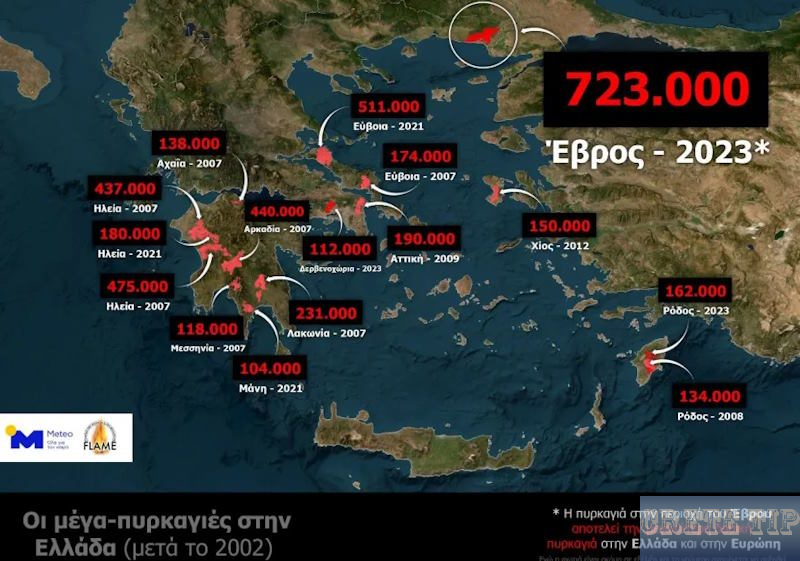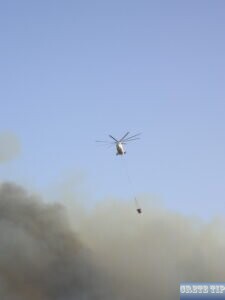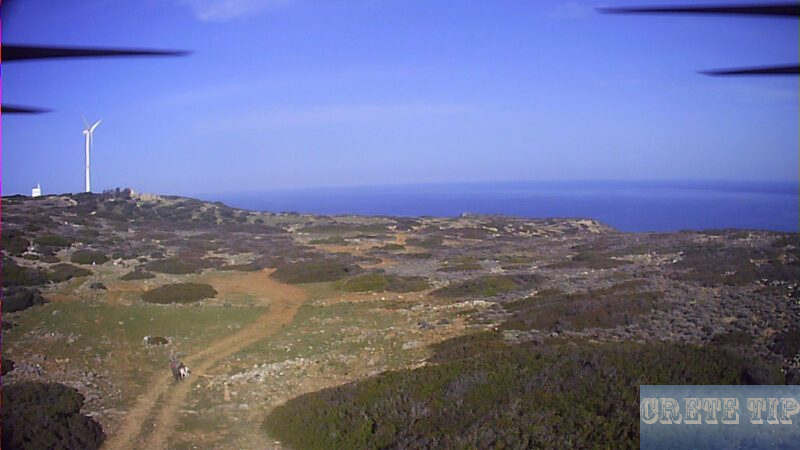Fires on the island of Crete. Pictures from fires and extinguishing work, and tips for prevention and reporting of bush and forest fires.
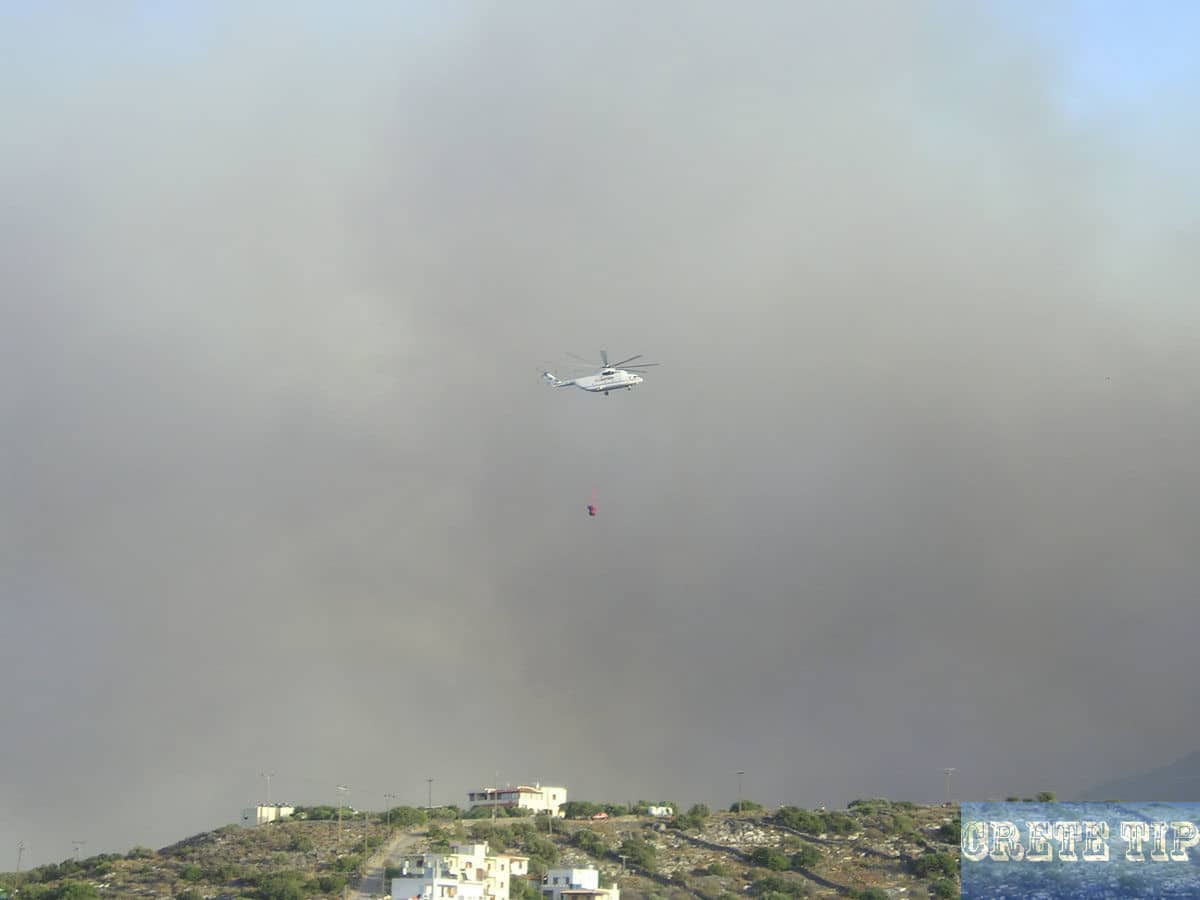
Fires on Crete and Greece
Every summer there are serious fires on the island of Crete and throughout Greece.
In part, they are causes of natural kind, but usually carelessness by open fire or even discarded cigarette. Unfortunately, however, it is also often the arson case, partly to make space for buildings available.
Therefore, in the summer increased attention in dealing with open fires is necessary and signs of an emerging fire should be as soon as possible be reported to the authorities.
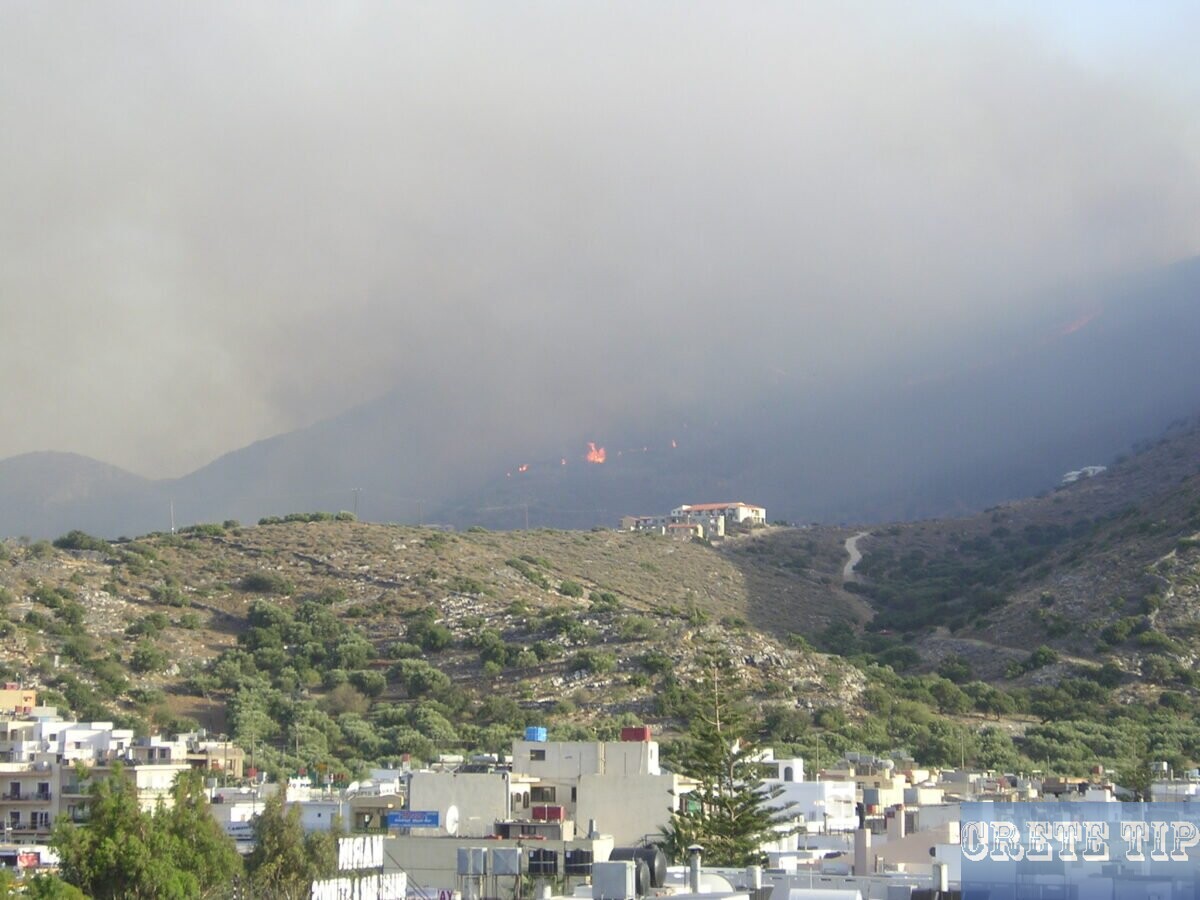
More photos of fires and extinguishing work on Crete

Important information and resources
– Current Fire Map
– Current fire risk map
Warning apps of the Greek Civil Defense:
– on GooglePlay for Android devices: CivilCrete Talos
– in the AppStore for Apple devices: CivilCrete Τάλως
Fire prevention in Crete
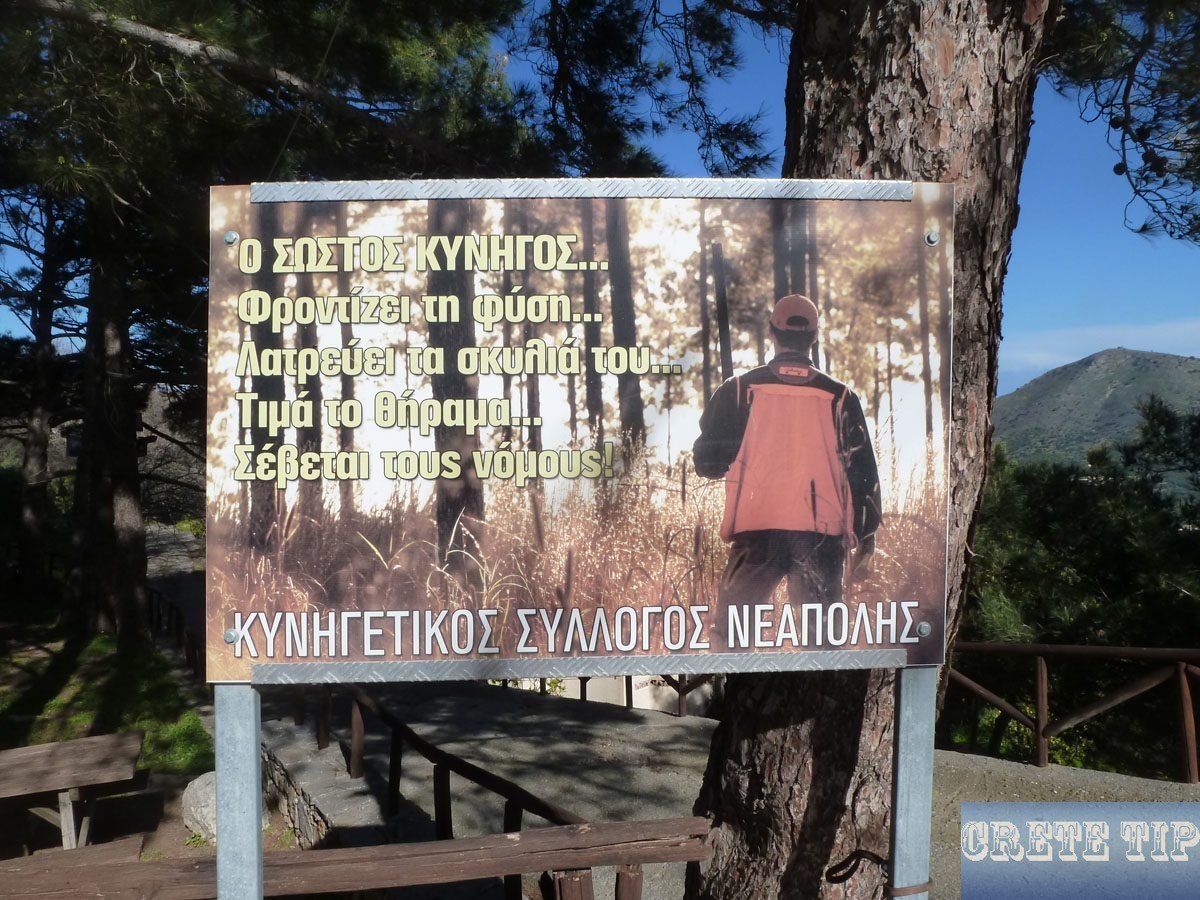
Forest and bush fires are a big problem all over the Mediterranean, and the season for them starts in May. It reaches its peak in July and August and lasts until the end of October.
During this period, outdoor open fires are prohibited. Nevertheless, between 2,500 and 3,500 fires occur annually in Greece. In addition, there are 5,000 to 9,000 fires caused by agricultural burns.
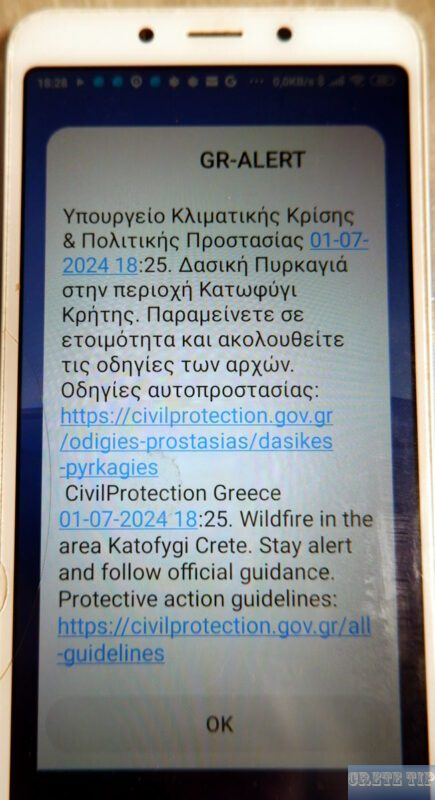
To avoid the outbreak of a fire, no straw, branches of trees or dried grasses should be burnt in summer.
Do not barbecue in forests or in places with dried grasses, branches or trees.
No work should be carried out under the open sky that could cause a fire – for example, with equipment that sprays sparks.
Never throw burning cigarettes carelessly anywhere.
Do not leave rubbish in forests as it can ignite.
If the house is located near a forest area or easily combustible areas, all dried grass, pine needles, dried leaves, branches, etc. should be removed within a radius of ten meters (30 feet) to form a firebreak.
Trees on the property should be pruned to 10 feet depending on the age and condition of the branches.
All dried branches should be removed from trees and shrubs around the house.
All trees within 5 meters (15 feet) of the house should be pruned to prevent branches from touching the walls of the house, roof or balconies.
Around the house, the branches of individual trees should be spaced at least 3 meters (10 feet) apart.
No plastic water outlets or drains should be installed on the exterior walls of the house.
The shutters or blinds of the house should be made of non-flammable materials.
Chimneys and ventilation pipes should be covered with special non-flammable blinds to prevent sparks from entering the interior of the building.
Do not store flammable materials or objects near the house.
Do not place open fuel oil tanks nearby.
Firewood should be stored in a locked and protected place.
Fire extinguishers should be available ready for use and adequately maintained.
A water hose must be available to reach the entire floor area to be protected.
A water tank with an electric pump and water hose will help in the event of a fire.

If you see a fire, you should immediately call the Greek fire brigade switchboard (telephone number 199) and report the exact location of your position and that of the fire. The type of burning vegetation and the direction in which the fire is spreading (wind direction) should be indicated. The call should not be terminated until all essential information has arrived clearly.
However, if you cannot communicate sufficiently in English or Greek, you can call the European number 112 at the headquarters in Athens. Here they also have the possibility to locate the position of your mobile phone, which is not possible at the next local fire station under 199. Several languages are spoken in Athens.
When the fire approaches your house, you should first remain calm. All flammable material around the house, as well as in the protected storage areas, must be removed, as it could ignite and lead to a fire inside the building.
All openings such as chimneys, doors and windows must be closed to prevent smoke from entering.
All gas lines and liquid fuel supplies inside and outside the building must be closed.
Parasols and awnings must be removed from windows and the balcony.
Access to the property should be open for firefighters.
A ladder should be on the opposite side to the fire so that the roof can be reached quickly from there.
Connect all hoses to water lines inside and outside the building and water the property and house walls.
If visibility is impaired by smoke, interior and exterior lights should be turned on.
If the fire has arrived nearby, the house should not be abandoned unless an escape route is completely safe. This is because the chances of survival inside a building constructed of non-combustible materials are very high. A car, on the other hand, immediately bursts into flames and smoke. However, if the house is built of wood, one must seek shelter in a building in the neighbourhood.
If a request is made by the fire department or police to evacuate the area, one should follow the instructions and escape routes exactly.
Furniture should be moved to the centre of rooms and people should stay away from doors and windows. All doors inside the house should also be closed to prevent the spread of fire.
All bathrooms, sinks and available buckets should be filled with water to have supplies of it.
All people and animals should stay in one place and carry flashlights with spare batteries in case of a power outage.
When the fire is out, immediately leave the house and extinguish any remaining fire. Within the next two days, the area around the house should be checked regularly for reignited fires.
Shortage of firefighters in Crete
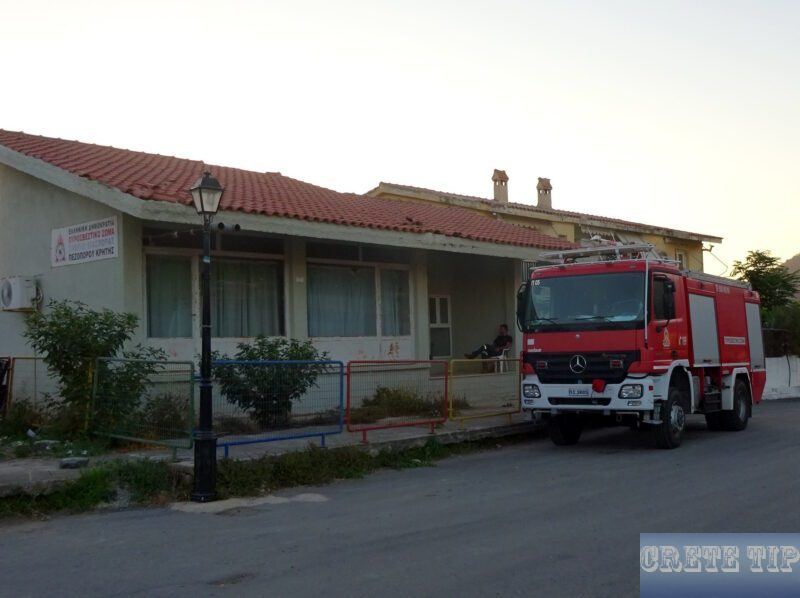
Crete’s dealing with a real shortage of firefighters and basic equipment right now. This gap makes it tough for emergency services to manage fires and keep people and property safe. Read more about the challenges here.
With so few resources, rural accidents get riskier, and the region’s just stretched too thin to respond quickly. It’s a pretty glaring issue for safety in the area.
Firefighters are up against a lot—staffing is down, resources are thin. Especially on the islands, the number of available personnel just isn’t enough. Sometimes, they’re short by dozens of people, which means those on shift are really carrying the load.
The fire engines? Some of them have seen better days. Outdated vehicles mean slower response and more breakdowns. Lacking equipment doesn’t help, either, especially when it’s crunch time.
There have been some investments in specialised forest fire units, which is something. But urban fire response is still lagging, both in staffing and in tech. City fires need nimble teams who can think and act fast—right now, that’s a challenge.
It’s not just fires, either. Tractor accidents and other mishaps on farms are adding to the strain. All these risks together mean emergency services are stretched in every direction.
Key Issues Facing Firefighting Teams |
Description |
|---|---|
Staffing shortages |
Hundreds of firefighters are missing, reducing readiness. |
Aging vehicles |
Older fire engines slow response and may break down. |
Equipment shortages |
Lack of essential gear limits first-line emergency work. |
Urban fire challenges |
Requires specialised personnel and advanced resources. |
Agricultural accidents |
Increased risk from farm machinery incidents impacts demand. |
- Recruit and retain permanent firefighting staff to close gaps.
- Replace or upgrade old vehicles with modern, reliable models.
- Supply frontline teams with updated, adequate equipment.
- Enhance training and resources for urban fire operations.
- Establish protocols to reduce farm-related accidents and ease emergency response.
Staff and Equipment Shortages
Firefighting services are really feeling the pinch from a lack of permanent staff and old vehicles. The average firefighter is about 45, and that’s only going up. No one’s hiring new permanent staff, which is, frankly, a problem.
There are temp teams, sure, but they’re mostly for forest fires and can’t step up in urban situations. Their help matters, but it’s not enough.
To get things working properly, each regional unit needs at least 20 more permanent firefighters. That adds up to about 80 across the region.
Take one unit as an example: it’s supposed to have 160 firefighters, but only has 140. That makes it tough to fill all the shifts and cover emergencies.
Working conditions are rough. Firefighters rack up a ton of unpaid rest days and leave because there just aren’t enough people. Over 10,000 rest days are owed—imagine how exhausting that must be. No wonder they’re running on empty.
On the tech side, they’re using four drones to patrol key areas and spot fires early. Drones help with faster response and better monitoring. It’s a step forward, at least.
But here’s a big hole: there’s no firefighting helicopter. For two years now, the region’s been without its own Erickson helicopter, which is ideal for the local landscape. It’s stationed way off in another city, so quick responses just aren’t happening for remote fires.
Key Issues |
Details |
|---|---|
Average firefighter age |
Approximately 45 years, rising to 48 |
Permanent staff hiring |
No new permanent hires currently |
Minimum hires needed region-wide |
80 firefighters total |
Staffing shortages example |
Unit needs 160, has only 140 |
Unpaid rest days owed |
Over 10,000 days |
Use of drones |
Four drones monitor fire-prone areas |
Helicopter availability |
Erickson model absent for 2 years |
Without enough skilled people or the right gear, it’s an uphill battle. The region really needs to hire more and invest in modern firefighting tools if it wants to be ready for what’s next.
Alarm Triggering Data
Between May 1 and June 10, Crete saw 36 fires, burning 25 hectares. That’s a lot of wildfire activity for just a few weeks. More on the numbers here.
Since January, there have been 288 fires, destroying 356 hectares. So, the region’s still struggling with prevention and control.
Emergency services have had their hands full. This year, teams responded to 27 rescue calls—4 deaths, 18 injuries. That’s actually down from 2024, when there were 86 interventions, 8 deaths, and 38 injuries.
Period |
Number of Fires |
Area Burnt (Hectares) |
Fatalities |
Injuries |
|---|---|---|---|---|
1 May – 10 June 2025 |
36 |
25 |
– |
– |
Year-to-date 2025 |
288 |
356 |
4 |
18 |
Year 2024 |
86 |
– |
8 |
38 |
- Fires are happening a lot in a short period.
- The land lost is still pretty significant, even with fewer incidents.
- Rescue calls are down, but they’re still vital.
- The risks for both communities and emergency crews are real and ongoing.
Honestly, these numbers just underline how much vigilance and resources are still needed to keep fire risks in check.
Experts warn of high fire risk after dry winter

Scientists are sounding the alarm about the upcoming fire season. This past winter was drier than anyone expected, and that’s left a lot of forests and even the edges of towns sitting ducks for wildfires.
Rain just didn’t show up like it usually does, so the ground’s parched. That means fires could catch faster and burn hotter than we’d like.
On top of that, it’s been warmer than usual. Not exactly what you want when dry brush is everywhere.
Some experts are worried that strong winds—probably linked to those warmer sea temperatures—might make things worse. Wind and fire are a bad mix.
Areas where forests bump right up against homes? Those are the real trouble spots. As cities keep creeping out into wild land, the risk just keeps climbing.
Key points to note:
- Rainfall was much lower than average during the winter months.
- Warmer, drier winters correspond with larger wildfire events.
- Strong winds could increase fire intensity and spread.
- Residents near forested zones should take fire safety seriously.
Arrival of European Firefighters to Support Greece During This Year’s Fire Season
This year, Greece is set to host more European firefighters than ever before through the European Civil Protection Mechanism’s Pre-Positioning Programme. Starting on July 1 and running until September 15, 2025, a total of 323 firefighters will gradually make their way in from Austria, Bulgaria, France, Moldova, Romania, and the Czech Republic.
These teams won’t just be scattered randomly—they’ll be based in key spots: Attica, Thessaloniki, and Patras. The plan is for them to jump in wherever fires break out, working side by side with Greek crews, especially during the high-risk season.
The programme isn’t just about numbers or brute force. There’s a big focus on hands-on training, too. Firefighters will get to collaborate directly with Greek teams, facing real emergencies together.
That kind of experience? It’s invaluable—what they learn here, they’ll take home and put to use in their own countries down the line.
To get everyone on the same page, the Greek Fire Service put together a joint training seminar on May 20, 2025. This one was mainly for Liaison Officers from abroad and administrative liaisons.
Another session is lined up for late June, aimed at team leaders who’ll be arriving with their units. The idea is to iron out any coordination wrinkles before the season really gets going.
Firefighters by country and deployment sites:
Country |
Number of Firefighters |
Deployment Areas |
|---|---|---|
Austria |
Included in total |
Attica, Thessaloniki, Patras |
Bulgaria |
Included in total |
Attica, Thessaloniki, Patras |
France |
Included in total |
Attica, Thessaloniki, Patras |
Moldova |
Included in total |
Attica, Thessaloniki, Patras |
Romania |
Included in total |
Attica, Thessaloniki, Patras |
Czechia |
Included in total |
Attica, Thessaloniki, Patras |
All teams are coming in ready to support local efforts fast, with the equipment and training to make a real difference. By pooling resources, the programme boosts the ability to fight wildfires in several high-risk regions.
It’s a pretty striking example of European solidarity in action, isn’t it? Sharing knowledge, practical skills, and a sense of responsibility—hopefully, it’ll help protect both people and landscapes when it matters most.
Severe fires in Crete and Greece
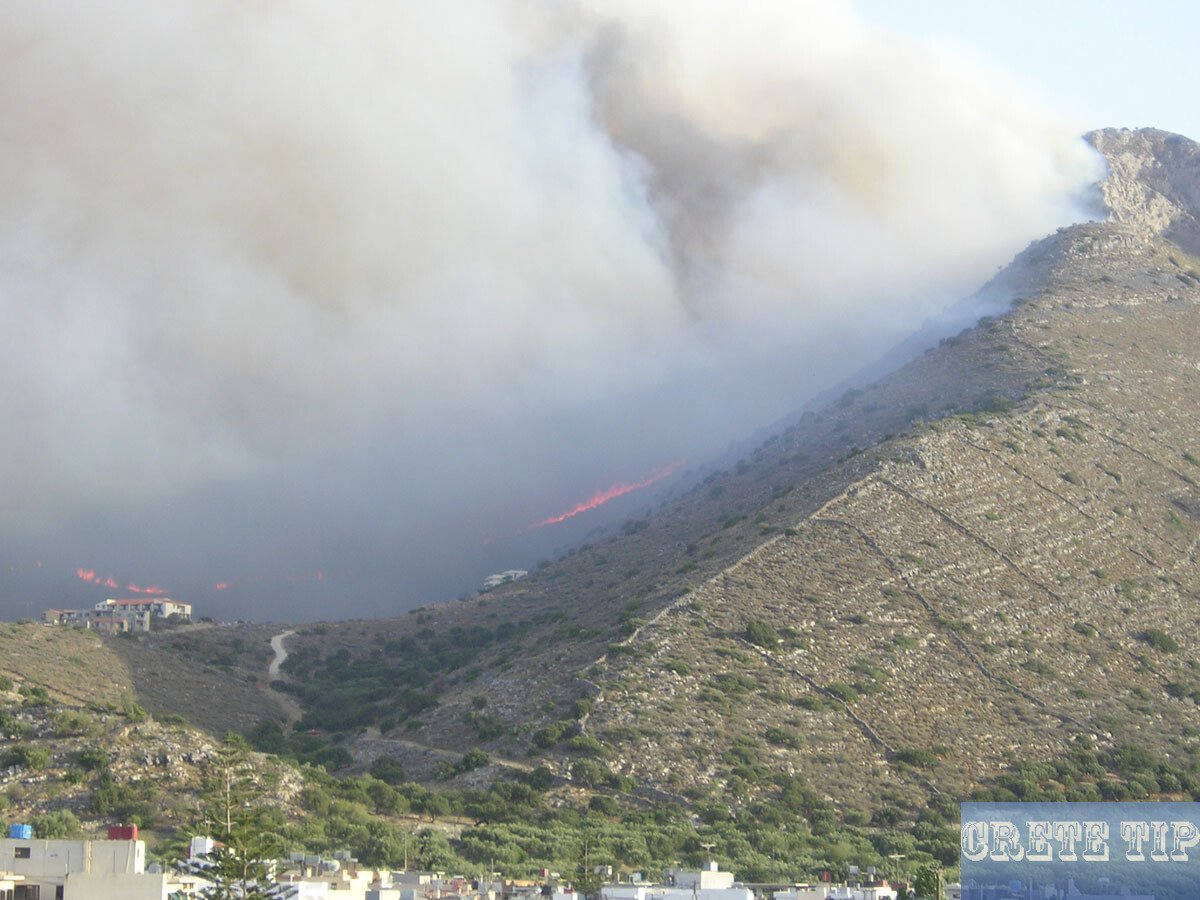
In 2018 alone, an area of 1,534 hectares on Crete was destroyed by numerous fires that broke out during that year.
According to the Hellenic Fire Service, 556 fires were registered on the island of Crete in 2018, burning down farmland and forests. Of these, 225 fires were in Heraklion prefecture, 122 in Chania prefecture, 139 in Rethymno prefecture and 70 in Lasithi prefecture.
However, Chania was in the lead with 1,061 hectares of burned land. In Lasithi, 364 hectares were lost to fires, while in Heraklion 85.7 hectares and in Rethymno only 23.1 hectares were devastated by the fires.
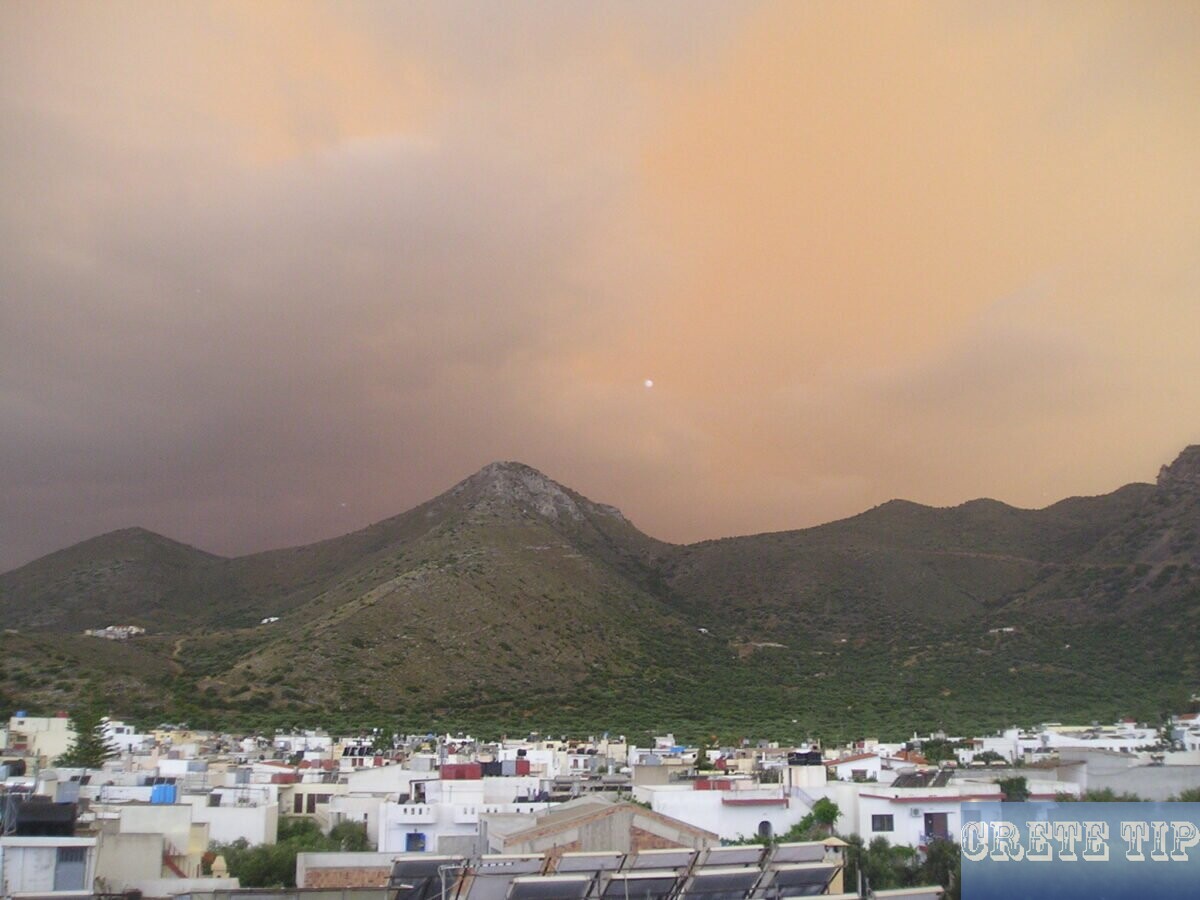
Among the most severe forest fires in Greece, however, were a number of outbreaks that occurred in the summer of 2007 between June 28 and September 21.
Incidentally, most of the photos shown above are also from the summer of 2007 in Crete.
The most destructive and also deadly inferno began on August 23, 2007. The fire spread rapidly, got out of control by August 27, and raged until early September, when it was finally extinguished.
These fires occurred mainly in the west and south of the Peloponnese, as well as the southern part of Euboea. In the process, including several firefighters, 84 people died, and of those, 67 died in August alone.
Officially, Greek authorities suspect that some of the fires were arson to gain building land. Others were probably obviously just the result of negligence.
For the high temperatures and three consecutive heat waves of over 40 °C, together with a pronounced drought, made the summer of 2007 unprecedented in Greece’s recent history.
From late June to early September 2007, more than 3,000 forest fires were recorded throughout Greece, and nine more people died in the other fires that occurred in June and July.
A total of 2,700 square kilometers of forest, olive groves and farmland were destroyed in the fires, which was the worst fire disaster in Greece in the last 50 years.
Of the total 2,700 square kilometers, 1,500 square kilometers of forest were affected in southern Greece alone. Many buildings were also destroyed in the fires. In total, the fire destroyed 1,000 houses and 1,100 other buildings and damaged hundreds more.
While some fires are believed to have been caused by environmental factors, basic intent has not always been ruled out. For example, some of the fires may have been intentionally set to circumvent Greek law prohibiting construction in areas designated as forest land. Since Greece was the only state in the EU that did not maintain a complete land registry system, the unauthorized appropriation of such burned areas subsequently cannot be ruled out.
Substantial rewards were offered for any informant who could provide clues to the arrest of an arsonist.
Vyron Polydoras announced, ‘The reward is set between €100,000 and €1,000,000 ($1.36 million) for each act of arson, depending on whether deaths or serious injuries occurred and the extent of the damage.’
Finally, the Greek police were able to report three arrests of suspects involved in arson. A 65-year-old man from Areopolis was charged with arson and murder in connection with the fire that killed at least 6 people in the area.
In addition, two youths were arrested in northern Kavala on suspicion of arson. Greek Government Press Minister Theodoros Roussopoulos confirmed on August 27 that 61 people had been arrested on suspicion of involvement in arson, seven of whom remained in custody.
